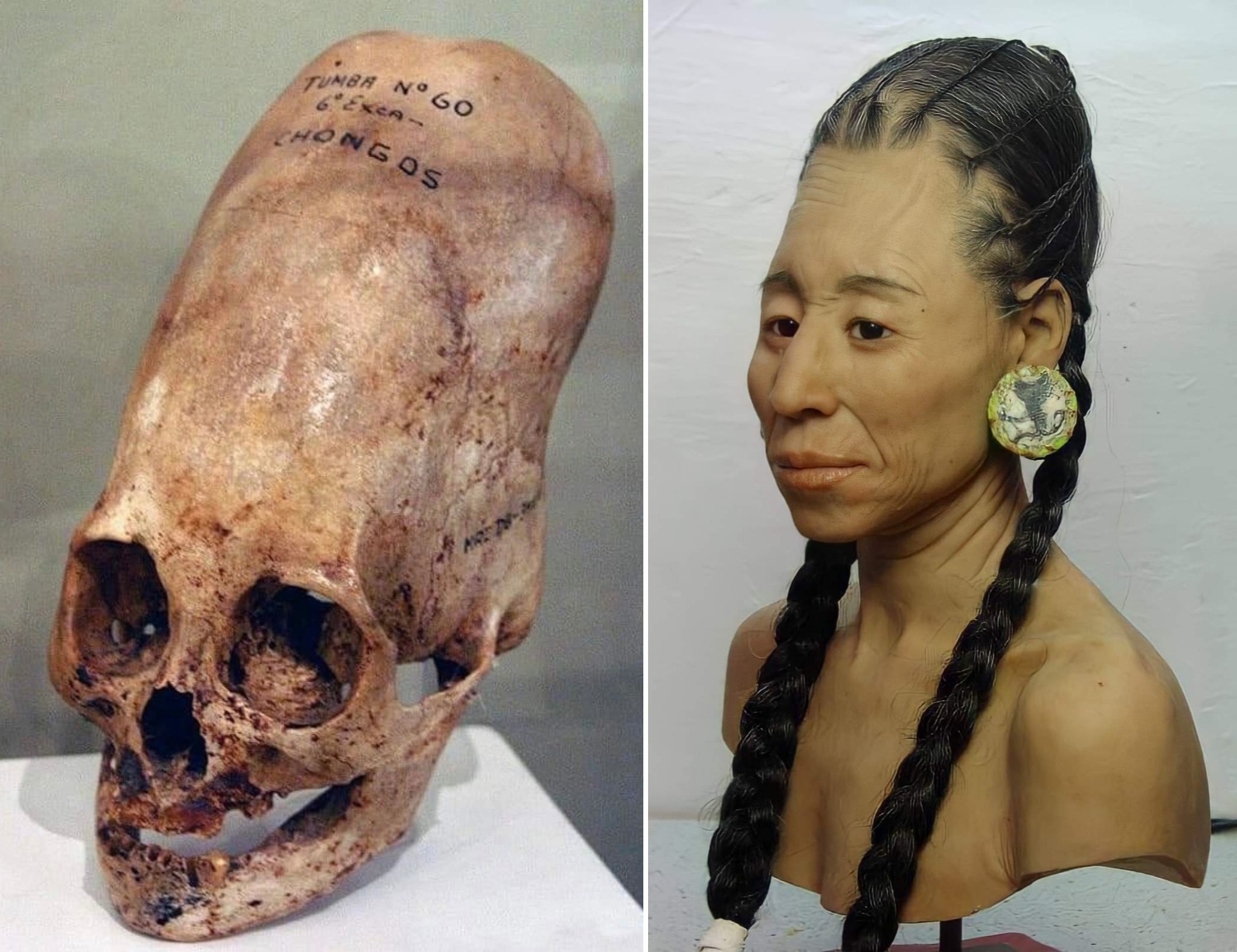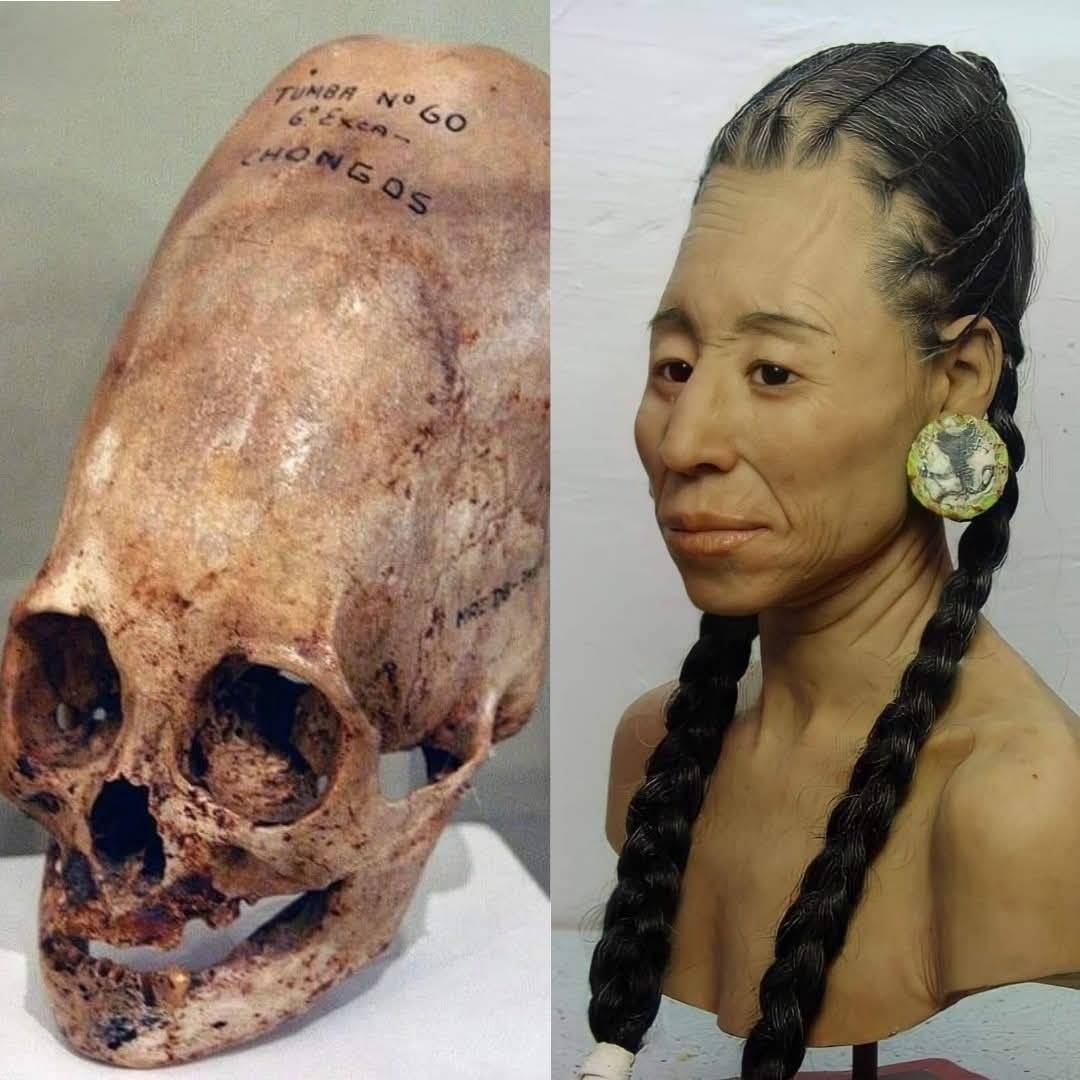Across the desolate, wind-swept peninsula of Paracas, Peru, archaeologists have uncovered one of South America’s most haunting enigmas — a vast collection of elongated human skulls, their shapes unlike anything found elsewhere on Earth. With foreheads stretching upward in narrow, sweeping curves, these skulls appear almost alien in form. For nearly a century, they have inspired fierce debate among scientists, historians, and storytellers alike: were these distortions the result of ritualistic cultural practice, or do they reveal something unknown about humanity’s past?
Discovery in the Desert

The mystery began in 1928, when Peruvian archaeologist Julio C. Tello, often called the father of Peruvian archaeology, unearthed an ancient necropolis on the Paracas Peninsula. Within the desert tombs, he found hundreds of skeletons, many with skulls so dramatically elongated that they seemed to defy normal anatomy. Some measured up to 25% larger cranial volume than the average human skull.
Carbon dating placed these remains between 3,000 and 2,500 years old, predating the Inca civilization by more than a millennium. The people who created them belonged to the Paracas culture, a highly advanced society known for their exquisite textiles, complex burial customs, and deep spiritual traditions.
Cultural Practice or Genetic Mystery?

Most anthropologists interpret the elongated skulls as the result of cranial deformation, a process found in numerous ancient cultures around the world. From the Maya in Central America to tribes in Africa and Eurasia, parents intentionally reshaped infants’ skulls by binding them with cloth or wooden boards during early childhood, when the bones were still soft.
The reasons were likely symbolic and social — an expression of status, identity, or religious devotion. In Paracas, the distinctive elongated form may have signified divine ancestry or a spiritual connection between humans and the gods. Within this interpretation, these skulls represent humanity’s unique ability to alter the body to mirror belief, to sculpt identity from flesh and bone itself.
“The Paracas skulls were not genetic anomalies,” explains Dr. Elena Cortés, a physical anthropologist specializing in South American cultures. “They were cultural creations, part of a deeply spiritual worldview where physical form reflected cosmic order.”
The Anomalies That Challenge Science

Still, not all the skulls fit neatly into the explanation of deliberate shaping. Some researchers have noted features that appear to differ from normal human anatomy: thicker skull walls, unusual cranial sutures, and larger-than-average cranial capacity. These irregularities have fueled speculative theories — from claims of a lost branch of humanity to ideas of extraterrestrial influence preserved in ancient myth.
Mainstream scientists, however, remain cautious. Such features may stem from natural variation, taphonomic distortion over centuries, or simple measurement error. “There’s no credible evidence of non-human origin,” notes Dr. Marcus Klein, a paleoanthropologist at the University of Bonn. “What’s extraordinary about Paracas isn’t biology — it’s belief.”
Testing the Evidence
In recent years, several groups have conducted DNA analysis on samples from the Paracas skulls. Early independent tests yielded inconclusive results, with some fragments showing degraded or contaminated material. Later studies identified genetic markers consistent with ancient Andean populations, supporting the theory that these were fully human remains.
However, the inconsistencies in testing — combined with limited access to specimens — have left the debate open. Many researchers call for comprehensive, peer-reviewed studies using modern sequencing methods to finally resolve the question.
“The skulls have become symbols of our fascination with the unknown,” says Dr. Cortés. “They sit at the intersection of science and myth — where archaeology meets imagination.”
The Desert That Guards Its Secrets
The Paracas Peninsula is a harsh, silent landscape — its ochre cliffs falling into the Pacific, its dunes whispering over ancient tombs. Here, the Paracas people flourished in isolation, creating elaborate textiles dyed in vibrant reds and golds, practicing advanced irrigation, and burying their dead in bundled mummies wrapped with ceremonial offerings.
The elongated skulls fit naturally within this cultural context: markers of identity and transcendence, created by a people who saw the body as a vessel for cosmic transformation. Yet, as with so many archaeological discoveries, much remains unknown. No inscriptions or written records have survived to explain precisely why this practice held such power — leaving only the skulls themselves as silent witnesses.
Between Myth and Memory
Over time, the Paracas skulls have become icons of mystery archaeology, featured in documentaries, books, and online speculation. Some claim they represent lost civilizations or ancient visitors from the stars. Others see in them something far more human: our timeless drive to reshape the world — and ourselves — in pursuit of meaning.
Skeptics remind us that extraordinary claims require extraordinary evidence. Yet even the most cautious scholars admit that the skulls continue to inspire profound questions about human creativity, spirituality, and the boundaries of identity.
Legacy of the Paracas People
Today, the elongated skulls are preserved at the National Museum of Archaeology, Anthropology, and History of Peru, where they continue to draw researchers and tourists alike. For all their strangeness, they remain a distinctly human artifact — a testament to how culture can transform biology, and how faith can leave its imprint not just on stone or canvas, but on the very shape of the human head.
As the desert winds sweep over Paracas, the skulls rest beneath glass, watching across millennia. Their message is simple yet profound: humanity has always sought to transcend itself — to alter flesh and form in the pursuit of something greater.
Silent, elongated, and eternal, they are reminders that the past is never as simple as we think — and never entirely explained.